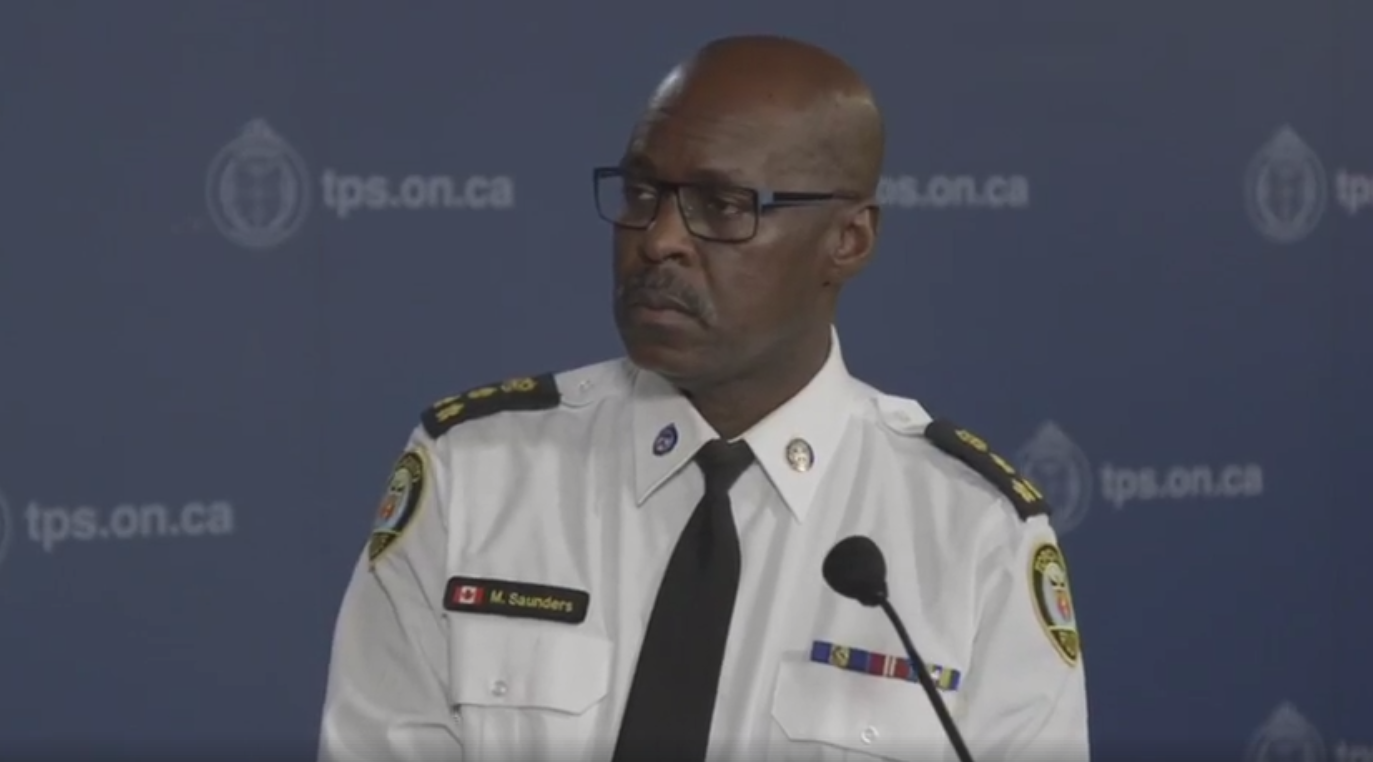You would imagine that Mark Saunders, the chief of police in a city that we now know was the hunting ground for an alleged serial murderer, would be racking his brain for everything that went wrong.
Instead, he’s satisfied.
“Was I satisfied with what we did? At the time, with the information that we had, the answer is yes,” he told the Globe and Mail in a revealing interview.
In the wake of the publication of Saunders’ words, most people have focused in on accusations that he was blaming the public for not coming forward with more information.
The full audio of the interview, which the police released, makes it clear that Saunders’ foremost priority is protecting the reputation of the Toronto Police Service.
And he seems dumbfounded why some Torontonians, many of whom have suffered mistreatment at the hands of police, might not want to come forward to give evidence.
In a different city, a better city, municipal leaders would be frantically trying to figure out how this was allowed to happen. But in Toronto, we’re left with defensiveness and denial.
The interview reveals that Saunders still thinks like a homicide detective instead of a broader steward of public safety. He defends his department’s actions by saying that if they had floated the possibility of a serial killer, it could have undermined a future prosecution.
But it also could have saved lives.
What Saunders needs to remember is that between 2012, when Project Houston was formed, and 2017, four people — Soroush Mahmudi, Dean Lisowick, Selim Esen and Andrew Kinsman — were murdered.
If the Toronto police had publicly stated that a serial killer was one possible reason that men were disappearing from the Church-Wellesley Village, it would have been a major media story, making the front pages of newspapers and leading nightly broadcasts. That could have led to many more tips coming in that could have helped the investigation.
Instead, by consistently downplaying that possibility, they ensured the story of missing men received minimal coverage.
And even when people did come forward to the police with information, they were sometimes met with the cold shoulder.
CTV has reported that a man told Toronto police that he last saw Majeed Kayhan with an older, white-haired man named Bruce, and even gave police his online username. What police did with that information, we still don’t know.
And allow me to relay another anecdote: last summer, a co-worker of mine tried to give Toronto police information about a suspicious vehicle he had seen roaming around Church-Wellesley Village.
He had the licence plate number and thought that might be relevant to the case. He tried on three separate occasions to relay that information to the police, both in person and over the phone. He was rebuffed, until months later when he was finally able to connect and give them his tip.
While the tip turned out not to be relevant, it’s just another indication that something is wrong with the way Toronto police handled this investigation.
In his Globe and Mail interview, Saunders goes out of his way to blame the victims of sexual assault for not coming forward to the police.
“We get this with sexual assault investigations when you have the bad date type of setting,” he said. “And people will not understand that if things aren’t reported, it emboldens the suspect.”
Saunders seems willfully blind to the numerous barriers that prevent sexual assault victims, especially LGBT victims, from going to the police.
Toronto police did not do all they could have to track down this alleged serial killer. They didn’t put out a reward for information, something that police regularly do for cold cases.
There was at least one positive takeaway from Saunders comments.
“When this unfolds, I would be open to any type of inquiry at the end of the day,” he said.
Good. Because a public inquiry is exactly what the families and friends of the victims, LGBT communities and the city of Toronto deserve.
Perhaps Saunders is satisfied with how police handled this case. But the victims deserve better.
Legacy: March 9, 2018 10:01 amA video was added to this story.

 Why you can trust Xtra
Why you can trust Xtra


